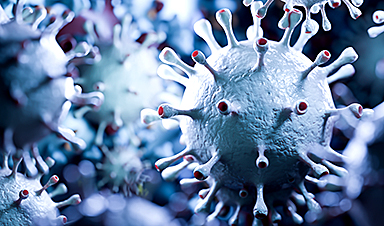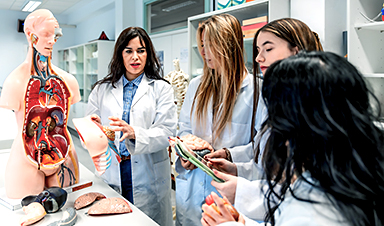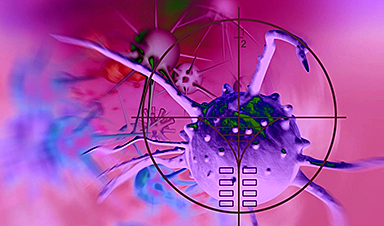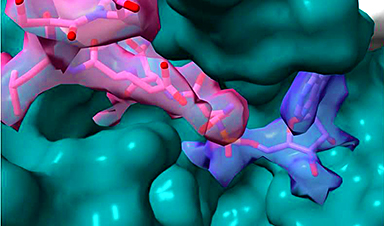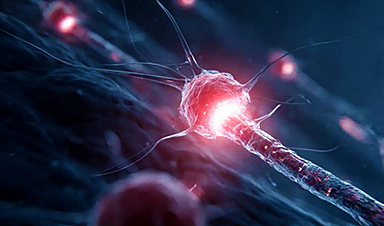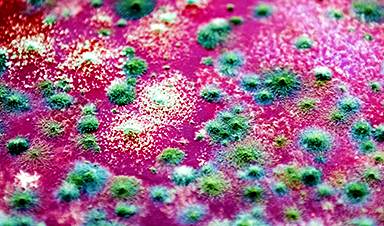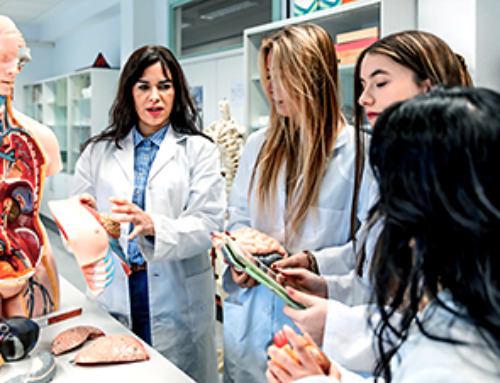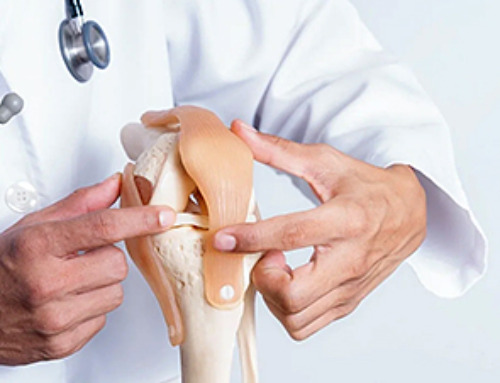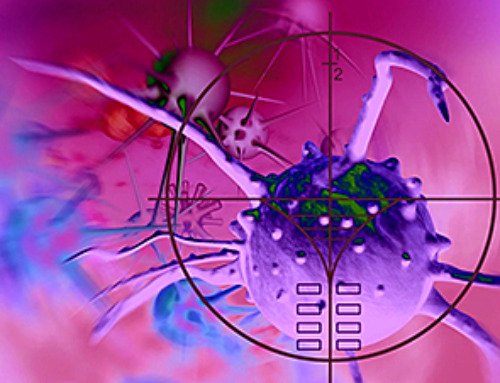Unlocking the secrets of COVID-19: a groundbreaking study reveals the intricate biomechanics behind the virus’s evolution and spread.
Richard Feynman famously stated, “Everything that living things do can be understood in terms of the jigglings and wigglings of atoms.” This week, Nature Nanotechnology features a groundbreaking study that sheds new light on the evolution of the coronavirus and its variants of concern by analyzing the behavior of atoms in the proteins at the interface between the virus and humans. The paper, titled “Single-molecule force stability of the SARS-CoV-2–ACE2 interface in variants-of-concern,” is the result of an international collaborative effort among researchers from six universities across three countries.
Mechanical Stability of the Virus and Its Global Impact
The study introduces significant insights into the mechanical stability of the coronavirus, a key factor in its evolution into a global pandemic. The research team employed advanced computational simulations and magnetic tweezers technology to explore the biomechanical properties of biochemical bonds in the virus. Their findings reveal critical distinctions in the mechanical stability of various virus strains, highlighting how these differences contribute to the virus’s aggressiveness and spread.
As the World Health Organization reports nearly 7 million deaths worldwide from COVID-19, with over 1 million in the United States alone, understanding these mechanics becomes crucial for developing effective interventions and treatments. The group emphasizes that comprehending the molecular intricacies of this pandemic is key to shaping our response to future viral outbreaks.
Key Contributions From Auburn University
Delving deeper into the study, the Auburn University team, led by Prof. Rafael C. Bernardi, Assistant Professor of Biophysics, along with Dr. Marcelo Melo and Dr. Priscila Gomes, played a pivotal role in the research by leveraging powerful computational analysis. Utilizing NVIDIA HGX-A100 nodes for GPU computing, their work was essential in unraveling complex aspects of the virus’s behavior.
Prof. Bernardi, an NSF Career Award recipient, collaborated closely with Prof. Gaub from LMU, Germany, and Prof. Lipfert from Utrecht University, The Netherlands. Their collective expertise spanned various fields, culminating in a comprehensive understanding of the SARS-CoV-2 virulence factor. Their research demonstrates that the equilibrium binding affinity and mechanical stability of the virus–human interface are not always correlated, a finding crucial for comprehending the dynamics of viral spread and evolution.
Innovative Techniques and Findings on Virus Strains
Additionally, the team’s use of magnetic tweezers to study the force-stability and bond kinetics of the SARS-CoV-2:ACE2 interface in various virus strains provides new perspectives on predicting mutations and adjusting therapeutic strategies. The methodology is unique because it measures how strongly the virus binds to the ACE2 receptor, a key entry point into human cells, under conditions that mimic the human respiratory tract.
The group found that while all the major COVID-19 variants (like Alpha, Beta, Gamma, Delta, and Omicron) bind more strongly to human cells than the original virus, the Alpha variant is particularly stable in its binding. This might explain why it spread so quickly in populations without prior immunity to COVID-19. The results also suggest that other variants, like Beta and Gamma, evolved in a way that helps them evade some immune responses, which might give them an advantage in areas where people have some immunity, either from previous infections or vaccinations.
Implications for Understanding and Responding to Variants
Interestingly, the Delta and Omicron variants, which became dominant worldwide, show traits that help them escape immune defenses and possibly spread more easily. However, they don’t necessarily bind more strongly than other variants. Prof. Bernardi says that “This research is important because it helps us understand why some COVID-19 variants spread more quickly than others. By studying the virus’s binding mechanism, we can predict which variants might become more prevalent and prepare better responses to them.”
This research emphasizes the importance of biomechanics in understanding viral pathogenesis and opens new avenues for scientific investigation into viral evolution and therapeutic development. It stands as a testament to the collaborative nature of scientific research in addressing significant health challenges.
Reference: “Single-molecule force stability of the SARS-CoV-2–ACE2 interface in variants-of-concern” by Magnus S. Bauer, Sophia Gruber, Adina Hausch, Marcelo C. R. Melo, Priscila S. F. C. Gomes, Thomas Nicolaus, Lukas F. Milles, Hermann E. Gaub, Rafael C. Bernardi and Jan Lipfert, 27 November 2023, Nature Nanotechnology.
DOI: 10.1038/s41565-023-01536-7
News
Repurposed drugs could calm the immune system’s response to nanomedicine
An international study led by researchers at the University of Colorado Anschutz Medical Campus has identified a promising strategy to enhance the safety of nanomedicines, advanced therapies often used in cancer and vaccine treatments, [...]
Nano-Enhanced Hydrogel Strategies for Cartilage Repair
A recent article in Engineering describes the development of a protein-based nanocomposite hydrogel designed to deliver two therapeutic agents—dexamethasone (Dex) and kartogenin (KGN)—to support cartilage repair. The hydrogel is engineered to modulate immune responses and promote [...]
New Cancer Drug Blocks Tumors Without Debilitating Side Effects
A new drug targets RAS-PI3Kα pathways without harmful side effects. It was developed using high-performance computing and AI. A new cancer drug candidate, developed through a collaboration between Lawrence Livermore National Laboratory (LLNL), BridgeBio Oncology [...]
Scientists Are Pretty Close to Replicating the First Thing That Ever Lived
For 400 million years, a leading hypothesis claims, Earth was an “RNA World,” meaning that life must’ve first replicated from RNA before the arrival of proteins and DNA. Unfortunately, scientists have failed to find [...]
Why ‘Peniaphobia’ Is Exploding Among Young People (And Why We Should Be Concerned)
An insidious illness is taking hold among a growing proportion of young people. Little known to the general public, peniaphobia—the fear of becoming poor—is gaining ground among teens and young adults. Discover the causes [...]
Team finds flawed data in recent study relevant to coronavirus antiviral development
The COVID pandemic illustrated how urgently we need antiviral medications capable of treating coronavirus infections. To aid this effort, researchers quickly homed in on part of SARS-CoV-2's molecular structure known as the NiRAN domain—an [...]
Drug-Coated Neural Implants Reduce Immune Rejection
Summary: A new study shows that coating neural prosthetic implants with the anti-inflammatory drug dexamethasone helps reduce the body’s immune response and scar tissue formation. This strategy enhances the long-term performance and stability of electrodes [...]
Scientists discover cancer-fighting bacteria that ‘soak up’ forever chemicals in the body
A family of healthy bacteria may help 'soak up' toxic forever chemicals in the body, warding off their cancerous effects. Forever chemicals, also known as PFAS (per- and polyfluoroalkyl substances), are toxic chemicals that [...]
Johns Hopkins Researchers Uncover a New Way To Kill Cancer Cells
A new study reveals that blocking ribosomal RNA production rewires cancer cell behavior and could help treat genetically unstable tumors. Researchers at the Johns Hopkins Kimmel Cancer Center and the Department of Radiation Oncology and Molecular [...]
AI matches doctors in mapping lung tumors for radiation therapy
In radiation therapy, precision can save lives. Oncologists must carefully map the size and location of a tumor before delivering high-dose radiation to destroy cancer cells while sparing healthy tissue. But this process, called [...]
Scientists Finally “See” Key Protein That Controls Inflammation
Researchers used advanced microscopy to uncover important protein structures. For the first time, two important protein structures in the human body are being visualized, thanks in part to cutting-edge technology at the University of [...]
AI tool detects 9 types of dementia from a single brain scan
Mayo Clinic researchers have developed a new artificial intelligence (AI) tool that helps clinicians identify brain activity patterns linked to nine types of dementia, including Alzheimer's disease, using a single, widely available scan—a transformative [...]
Is plastic packaging putting more than just food on your plate?
New research reveals that common food packaging and utensils can shed microscopic plastics into our food, prompting urgent calls for stricter testing and updated regulations to protect public health. Beyond microplastics: The analysis intentionally [...]
Aging Spreads Through the Bloodstream
Summary: New research reveals that aging isn’t just a local cellular process—it can spread throughout the body via the bloodstream. A redox-sensitive protein called ReHMGB1, secreted by senescent cells, was found to trigger aging features [...]
AI and nanomedicine find rare biomarkers for prostrate cancer and atherosclerosis
Imagine a stadium packed with 75,000 fans, all wearing green and white jerseys—except one person in a solid green shirt. Finding that person would be tough. That's how hard it is for scientists to [...]
Are Pesticides Breeding the Next Pandemic? Experts Warn of Fungal Superbugs
Fungicides used in agriculture have been linked to an increase in resistance to antifungal drugs in both humans and animals. Fungal infections are on the rise, and two UC Davis infectious disease experts, Dr. George Thompson [...]
